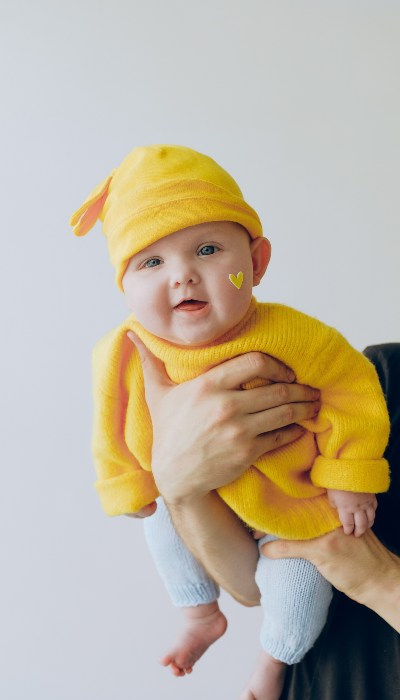Knitting hats is one of the oldest knitting techniques in existence, and it’s still as relevant as ever today. Hats are great accessories because they can change the appearance of an outfit instantly and they add instant warmth to your head in the colder months of the year. If you’re new to knitting or you just want to learn how to knit hats, you’ll find that making knitted hats follows a few simple steps and requires minimal supplies and time. Here’s how to knit a hat in seven easy steps.

1) Gather your supplies
To knit a hat, you will need the following supplies: yarn, needles, scissors, and something to mark rows with. There are many sizes of needles available for different weights of yarn. The heavier the weight of the yarn, the larger the needle should be. Most hats require at least 100 yards of worsted weight or Aran-weight yarn. You may also need circular or double-pointed needles (depending on your project).
One skein is not enough for a small project like this; if you plan on making several hats, you may want more than one ball of the same color so that you don’t have to spend time and money buying more once one is finished. But if you just want one hat then find an inexpensive color that suits your needs. You can use either long straight needles or circular needles for knitting projects. If you’re new to knitting and need help choosing which type of needle is best for you, here’s a quick guide:
Long straight needles are typically used when working back and forth on smaller pieces such as scarves, cowls, shawls, socks, sleeves, and other smaller projects. Circular needles come in pairs with a cable connecting them together near the tips and they’re usually used when working in the round on large pieces such as sweaters, blankets, and anything else requiring several balls of yarn.
They’re also handy when doing things like magic looping and picking up stitches. Needles come in various lengths, but most knitters prefer between 9 and 13. For beginners who are still learning how to do basic stitches, it’s best to start with shorter needles around 6. Use whichever length is comfortable for you.
2) Use double pointed needles

1. Cast the number of stitches specified for your desired hat circumference with the appropriate knitting needles. This will be the first row of your hat and is considered the back stitch or purl row. When casting on, cast on loosely so that your stitches will stretch while working. I usually cast on an extra 5-10% of stitches than my original measurement because it is better to have too many than not enough (especially if you are making hats for kids).
This backstitch is also called a cast-on row because it forms what is called a cast-on edge. At this point, most people would turn their work so that they can start knitting on one needle but you should do what’s most comfortable for you. It does not matter which side you start knitting from, as long as the bottom end of your needles is at the bottom end of your fabric. You want to keep turning your work as you go along, rather than moving from side to side.
2. Knit two stitches together. Repeat until all stitches have been knitted off the needle.
3. Insert a new double-pointed needle into the next stitch. Use the left-hand needle to lift up the knit stitch and place it onto the left-hand needle. Then insert another double-pointed needle into the same spot where you just removed a knit stitch, lift up that purl stitch and place it onto the right-hand needle. Now knit these two stitches together again – basically going backward. Continue this process with each remaining knit/purl pair of stitches.
4. Turn your work again so that you’re facing a different direction from before. The first half of your project should now be done; now it’s time to get started on round two.
5. Pick up the loop closest to the last stitch that worked (usually sticking out) and put it over the second needle (or first needle if you are like me). The yarn should still be coming from between the front of your fingers. Gently pull down on both loops so that they twist around each other and continue knitting across the row using only one needle now. 6: Place a stitch marker at this point to remind yourself where round two begins.
3) Cast on all stitches
Place your thumb and pointer finger at the center of the circle – Wrap the yarn over your right hand and under your left hand, then go over the left and under the right again.
Repeat this action until you have enough stitches on your needles (usually cast on five or six times), but don’t worry about keeping track of how many rows you’ve made; instead just make sure that you keep an even tension so that it is not too tight or too loose.
To bind off, knit two stitches together, then pass them off to your other needle. This can be done by taking one stitch off with each needle, then crossing them behind each other so that they are both on top of the same needle before knitting them together. Make sure to knit loosely, otherwise, the hat will turn out much smaller than intended. Finally, slip all remaining stitches onto a single needle and pull tightly to close up any gaps.
4) Knit in pattern until the desired length
Cast on 56 stitches. Begin Garter Stitch and knit until the desired length. Cast off loosely and weave in ends. To give your hat that finished look, try using duplicate stitch for the ribbing pattern, or knit one round of contrasting color before beginning the ribbing. For an even more polished look, pick up stitches along the edge of the hat and work 1×1 ribbing or stockinette stitch along it.
You can also make the bottom edging stand out by adding 2 rows of Stockinette stitch at the bottom edge of the hat, then 2 rounds of Garter Stitch – this is also a great way to use up some leftover yarn. There are many ways to customize your hat: Add cables, flowers, textured stitches, or even Fair Isle patterns! I personally love adding a little slouchy touch with drop-stitches: these are made by casting on 2 fewer stitches than you would normally cast on and purling 2 together as if they were one stitch.
5) Bind off all stitches

First, cast on all the stitches for your hat. Next, knit up the brim by turning and knitting one row after another until you have reached the desired length of your brim. Make sure to put a stitch marker between every two rows of knitting and take note that you are only knitting these rows in order to create the hat’s brim. You will remove these stitches later on, so this is not meant to be an actual part of your hat.
You will now begin decreasing at both ends of your hat with any decrease technique you wish such as ssk or k2tog. I prefer ssk because it is less noticeable than k2tog, but if it feels easier for you then by all means go ahead with either. After about six inches from the end of your knitting needle, cast off. Cut a piece of yarn and pull it through the remaining loops before cutting it off.
Thread this piece of yarn onto a tapestry needle, weave it through the fabric just below where you cut off, turn over your work so that the top becomes the bottom, and knot securely with thread. Pull tightly to close off the hole (make sure there are no gaps) and tie off the excess string. Now fold the project in half so that the two sides meet and lay them flat side-by-side on your table or floor.
Slip a crochet hook into one of the little eyelets created by crocheting around your handiwork, grab hold of both strands near its head, and slide them together along their adjacent edges, matching point A to point B: Continue doing this until you reach point C – when meeting points D to E repeat steps 3 & 4 again). Take care not to break yarn when pulling out slipknot.
Repeat the process on the other side of the garment. To get rid of the bind-off edge fringe, insert the right needle under the loop closest to the left needle and lift it up and over the left needle. Keep working loose stitches in this manner across the entire edge, working from right to left; while continuing to lift loops upwards like they’re going under the left needle. Do not pull too tight when lifting loops or else you might cause some of your live stitches to disappear!
When all live loops have been lifted over left needles, insert right needles through the center of the last loop formed. With fingers holding strand down towards the front of work (so as not to unravel), draw yarn through loop slowly until tight enough for the final knot at back away from hands; tighten firmly by tugging gently on knotted strand behind finished hat edge.
6) Sew seam together
You’ll need needles, yarn, and matching thread. You can usually find all of these items at your local craft store. The general process of knitting involves using one needle as the working needle and holding the other needles behind it in order to maintain even tension on the working piece. The stitches are made with the yarn on the right side or back of the work.
1) Holding one needle straight up vertically while grabbing a second straight up horizontally – insert the tip of your right-hand needle under both strands of yarn that are coming off of the end of your left-hand needle from back to front.
2) Using your fingers, pinch these strands close together so that they will not pull through easily when you draw them through with the working hand needle.
3) Next, push the right-hand needle down through the strands of yarn still held by your left hand and bring it up towards you.
4) Then, wrap the newly-created loop around the top finger of your left hand and use this loop to create a stitch on the top part of your working needle. Pull tight but don’t make it too tight; this will keep each stitch from slipping loose during knitting.
5) Repeat steps 1-4 for the desired number of stitches until the last row is finished.
7) Add a pom pom
After the knitting is done, use sharp scissors or pinking shears to cut along the selvage. Cut straight across the middle of one ear flap, then cut up and down each side as shown. This will create three strands of yarn. Tie these strands together and trim any excess. Thread a needle with matching yarn (or embroidery floss), pull the thread through the loop, then tie tightly near the end of each ear flap again.
Weave yarn around your fingers for better control if needed. Hold both loops on the left hand in your right hand while holding the third loop in your left hand. Transfer the first loop from your right hand to your left hand by inserting it between your two fingers and pulling it out over the top of them. Next, insert this same left-hand loop back into the right-hand loops and pull it out over top again. Continue until all six loops are on either side of you. Use this new center loop to start working on knit stitches on both sides:
Inserting needle from front to back through both loops on opposite sides at once.
Pulling new stitch tautly against those already on needles; then work next stitch similarly on another side; turn work 90 degrees and repeat. Work more rows like this until the hat is desired height. Finish with a row of purl stitches (going backward). Bind off loosely by cutting yarn close to work but not so close that it pulls the last stitch off its needle.
Draw the remaining tail through the last loop and fasten securely. Sew cast-on edge to live stitches on the other side of the edge. Sew a strip of grosgrain ribbon to the underside of the earflaps–this will keep them neatly folded down and out of the way. You can also make pompoms for the end, which are perfect for winter hats.
Conclusion
So there you have it, all the information you need to know to get started knitting hats. If you found this helpful please feel free to share it with others or leave a comment below.
Also, check out the latest articles “Summer crafts” and “Resin crafts“
Hi I’m Bilal Malik, a digital marketing and blogging expert holding years of experience.










